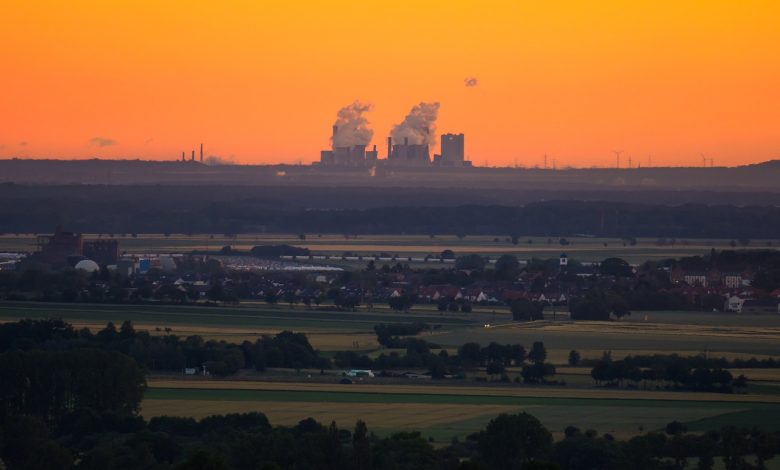The Coronavirus Is Killing Coal

Slamming the Fossil Fuel Industry
The coronavirus pandemic has slammed the fossil fuel industry. As the global demand for energy has collapsed, the demand for fossil fuels has also plummeted. The fallout from the coronavirus impacts has caused oil prices to turn negative and has created a wave of bankruptcies throughout the oil industry. Moreover, the U.S. shale oil industry has taken almost more damage than any other sector of the fossil fuel market. However, while the dramatic collapse of the oil and gas market has consistently remained among the top headlines of the world’s media outlets throughout the beginning of 2020, news related to coal industry impacts has remained relatively hard to find. Even though news related to the coal industry hasn’t been as prominent as the notion of negative oil prices and shale industry bankruptcies, the coronavirus has had just as big of an impact on coal as it has had on oil.

A Long Struggle for Coal
Prior to the beginning of the coronavirus pandemic, the coal industry was already struggling. The global coal industry decline has been gaining steam in recent years. When world leaders first started to push forward with implementation plans related to the Paris Climate Agreement, the tension really started to compound for the coal industry. The pressure has been particularly strong from environmental advocates, who say that coal-fired power plants are among the biggest sources of air pollution and global carbon emissions. These challenges have been most visible among the developed world. In the United States alone between 2017 and 2019, eleven U.S. coal producers filed for bankruptcy, which included Murray Energy, the most well-known privately-owned coal conglomerate in America (Moritz-Rabson, 2019). Following Murray Energy’s 2019 bankruptcy, the company recently revealed plans for a complete liquidation of all its physical and economic assets in 2020.
In 2017, energy giant BP released its Statistical Review of World Energy. Within this report, BP highlighted how the world holds about 1.1 trillion tons of remaining coal reserves. Based on future energy projections related to global energy needs, 1.1 trillion tons coal has been said to be enough to meet global needs for the next 150 years. However, environmental organizations like the Natural Resources Defense Council and the Sierra Club have been partnering together in an effort to compel global policymakers to leave these remaining coal reserves under the ground and instead make investments in renewable energy. On the other side of the argument, coal advocacy organizations such as the World Coal Association have been lobbying nations not to abandon coal. Instead, the World Coal Association has been working to advance investments in clean coal technology. However, given the rapid decline in coal-related investments, industry analysts have never more concerned about the future of the once-thriving coal industry.

The Worst Downturn in History
The coal industry is getting hammered by the coronavirus. Coal industry analyst Andrew Blumenfeld has been working for over thirty years as an analyst for IHS Markit. In an interview with PBS in April of 2020, Blumenfeld called the latest downturn in the coal industry the worst that he has ever seen. The severe and sudden shock of the coronavirus pandemic has exacerbated some of the prevailing coal industry concerns that have been lingering over the past decade. Even though coal is still the most plentiful fossil fuel source in the U.S. and also the country’s largest source of electricity, the economics of the coal industry had been changing long before the coronavirus started to impact electricity needs. Efforts made by the Trump administration to revitalize the coal industry have consistently failed. In fact, even with policies aimed at supporting the industry, the demand for coal has already dropped to a level that hasn’t been seen since 1978 (Goldman & Egan, 2019).
After the coronavirus pandemic started to settle in across the U.S., an increasing number of coal companies ramped up worker layoffs, shut down coal mines, and filed for bankruptcy. Even previously successful coal mines have been struggling to make a profit. The Longview Power coal plant in West Virginia is known as the country’s most efficient and productive coal-fired power plant. However, as a result of reduced demand from the coronavirus, the country’s most efficient coal power plant was forced to file for bankruptcy. Coal analyst Matthew Preston from the Wood Mackenzie economics firm says that the demand for coal in 2020 has already dropped between 35 and 40 percent when compared to 2019 (Frazier, 2020). The economic shutdown, an unusually warm winter, and prevailing market forces have created one of the worst years on record for the American coal industry.

Coal States Are Feeling the Pressure
It comes as no surprise that U.S. states like West Virginia and Wyoming that rely the most of the coal industry for economic activity are experiencing the biggest fallout from the decline of the coal industry. While the coal industry has been prone to numerous boom and bust periods throughout history, a number of energy analysts predict that this downward trend for coal is more than just another cyclical decline. Instead, this downturn may be one that the coal industry is never able to recover from. The sinking coal industry has created enormous budget deficits for Wyoming, which has mined more coal than any other state since 1986 (Erickson, 2020). During the height of the coronavirus outbreak, Wyoming’s Legislative Service Office revealed that the state could lose between $68 million and $149 million by the end of fiscal year 2021.
Power Grid Changes
The power grid within the mid-Atlantic saw electricity demand decline by eight to nine percent in March 2020. The economic lockdown has dramatically eroded the need for higher levels of electricity generation. Since electricity produced from coal is already more expansive than renewables and natural gas in many parts of the country, when the demand for electricity goes down, coal-fired power plants are often the first power-generating facilities to close. Although, the nation’s electric utility companies have remained resilient when faced with declining coal power generation. For example, Dominion Energy is one of the country’s biggest electric utilities. In 2005, Dominion used coal for 52 percent of its electricity generation. However, by 2019, the utility company had cut coal energy down to just 12 percent (Chatsko, 2020).
According to federal energy data, the demand for coal energy during the first quarter of 2020 dropped by 36 percent (Storrow, 2020). Conversely, as the demand for coal has dropped, the renewable energy industry has continued to grow. According to research conducted by Rhodium Group, solar and wind generated more electricity in the U.S. than the coal industry for a three-day period in March, which is the first time that this has ever happened (Frazier, 2020). Moreover, the Institute for Energy Economics and Financial Analysis believes that a combination of solar, wind, and hydropower produced more electricity than coal throughout the first three months of 2020 (Storrow, 2020)

Too Much Coal
The coal industry is a experiencing a similar phenomenon that is occurring within the oil industry. While oil companies have been plagued with too much oil, coal companies also have excess supplies of coal. Economic analysts from S&P Global Platts say that coal stockpiles are nearing the highest levels ever experienced. The current glut of coal is resulting in the need for more mines to shut down. However, a unique aspect of the excess coal supply could eventually result in coal prices dropping well below the cost of natural gas and renewables. If this were to happen, the coal industry could experience a brief rebound while the excess supply of coal is burned. Although, once the excess supply is consumed, energy experts expect the coal rebound to fizzle back towards the progressive decline that has been experienced throughout the past decade.
Political and Economic Pressure
Pressure from climate change activists, shrinking demand, and other market forces are leading some major financial institutions to abandon the industry. Instead of lending out new lines of credit to ailing coal companies, some banks are starting to deny new loans for coal companies because of increased risk that the loans will never be able to be paid off by the coal companies. This economic phenomenon is turning the coal industry into what has become known as a stranded asset. This means that the cost of new coal-related investments will likely never become financially viable. These risks are becoming increasingly apparent within the financial industry, which is why banks are refusing to fund coal projects. Even insurance companies are denying the underwriting of coal power plants and refusing to back coal-related initiatives.
Between 2015 and 2018, the total number of new coal-fired plants under construction fell by an astonishing 84 percent (Pearce, 2020). The U.S. Energy Information Administration is projecting that coal production in 2020 will drop to 537 million tons, which is a decline of 153 million tons, or 22 percent (Storrow, 2020). Furthermore, by 2024, the Institute for Energy Economics and Financial Analysis estimates that electricity generated from coal may only make up ten percent of the American power grid (Storrow, 2020). Predictions like this have continued to put a tremendous amount of pressure on the Trump administration. Prior to being elected president, one of Trump’s main campaign promises was to completely revive the coal industry, which he blamed the Obama administration for killing.

Failed Promises
Since being elected president in 2016, over 39,000 megawatts worth of coal-fired power plants have been shut down across the nation (Pearce, 2020). Surprisingly, none of these shutdowns were planned prior to Trump entering the White House. Despite his goal of saving the coal industry with a variety of regulation rollbacks, the Trump administration has been unable reverse the damage that free market economics have been having on the coal industry over the past decade. The growth of low-cost alternatives and natural gas, the cost of maintaining a decrepit system of coal power plants, and the advent of new state policies targeted at reducing the impacts of climate change have created an increasingly challenging environment for coal companies.
A Dying Industry
In April 2020, the U.S. Energy Information Administration released a report that highlighted how the coal industry was on the verge of producing less electricity than it did in 1960 (Chatsko, 2020). It appears that the industry as a whole may no longer be in the boom-bust cycle. Instead, the coal industry may be on its way towards a permanent bust. Between 2007 and 2019, the amount of electricity produced by coal power plants fell by 50 percent (Chatsko, 2020). A drop of this magnitude has never been experienced by any other source of electricity since the U.S. was first founded. While President Trump has remained committed to the ailing coal industry, some conservative policymakers have started to question whether it is worth the effort and expense to try to revive a dying industry. An increasing number of bipartisan energy experts have said that the economics of coal power generation simply do not make sense anymore. Irrespective of views on climate change or the environment, if an outdated industry continues to lose money even within a favorable policy environment, why spend addition resources trying to save it?
Sources
Chatsko, M. (2020). “Can U.S. Coal-Fired Power Plants Survive the Coronavirus Pandemic?” The Motely Fool.
Erickson, C. (2020). “The coronavirus pandemic could accelerate coal’s decline in Wyoming.” Casper Star Tribune.
Frazier, R. (2020). “The coal industry was already struggling. Now it’s getting hammered by coronavirus.” PBS: State Impact Pennsylvania.
Goldman, D., & Egan, M. (2019). “America’s largest private coal miner files for bankruptcy.” CNN.
Moritz-Rabson, D. (2019). “Eleven Coal Companies Have Filed for Bankruptcy Since Trump Took Office.” Newsweek.
Pearce, F. (2020). “As Investors and Insurers Back Away, the Economics of Coal Turn Toxic.” Yale School of Forestry & Environmental Studies.
Storrow, B. (2020). “Can Coal Survive the Coronavirus?” Scientific American.



